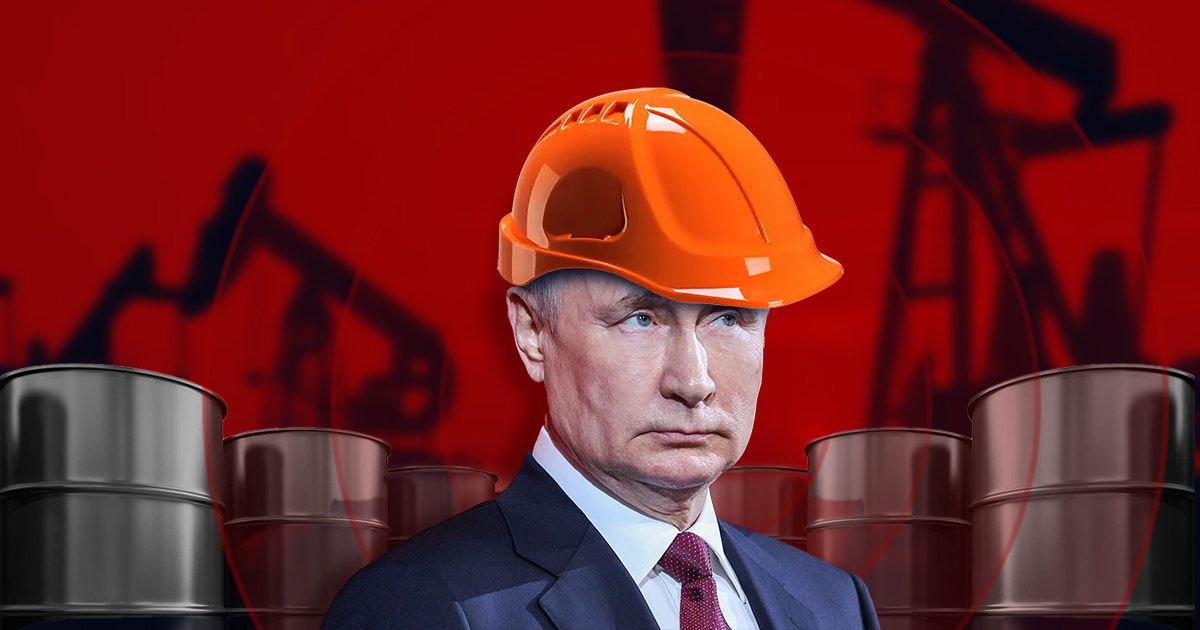According to the information Reuters, at least 20 ships are queuing to pass from Russian Black Sea ports to the Mediterranean. All because of the new insurance rules introduced by Turkey even before the start of the “ceiling” on the price of Russian oil, which took effect on Monday, December 5th. Moreover, judging by press reports, Ankara has planted a considerable pig in Moscow.
“Turkish maritime authorities said they are asking for further assurances from insurers that transit through the Bosphorus will be guaranteed in December,” writes Reuters.
The fact is that the decision of the G7, the EU Council and Australia concerns not only the introduction of a “ceiling” price for Russian oil, but also the provision of financial, brokerage, transport and insurance services , which are the foundation of the shipping world.
It also came into effect alongside an import embargo on Russian crude delivered to the EU by sea. Although a year ago, Europe received more than half of Russian oil exports worth about 50 billion euros. For another 23 billion euros, Russia sold its petroleum products (including diesel) to Europe. According to them, the embargo will come into force in February 2023.
The decision to cap the price took effect on Monday, December 5. And the tankers queuing to pass the Bosphorus are obviously loaded with Russian oil priced at over $60. New restrictions on Russian oil require tankers to be legally unloaded by Jan. 19 if they intended to carry oil priced above $60. At the same time, Kazakhstan, also a major oil exporter and using the sea route through the Bosphorus, has officially assured that the accumulation of tankers in the Bosphorus is a seasonal phenomenon, which is not surprising.
Of course, that’s why, according to information Financial Times, Russia has assembled a “shadow fleet” of more than 100 tankers to transport its oil while evading Western sanctions. According to Global Fishing Watch, which the publication refers to, for example, the 138-meter tanker Kapitan Schemilkin used prohibited mispositions, which the vessel’s automatic identification system is supposed to issue, to transport oil “undetected”. Such methods have long been used by Iran and Venezuela.
“The number of Russia-affiliated “stealth” tankers to evade surveillance in the South Atlantic has doubled in recent months, indicating the use of clandestine means to evade sanctions. By disabling their tracking systems on the high seas, vessels can safely transfer oil to tankers without being tied to Russia ”, – writes The Guardian.
The fraud and piracy used by Russia, after the war crimes committed in Ukraine and outright genocide, no longer surprises anyone. And the price of such smuggled oil may even be less than the cost of production. For weeks now, Russia has been threatening that its response to the new Western restrictions is about to give birth. According to Russian media, this could be a ban on the sale of oil to countries that have imposed these new sanctions and the establishment of maximum discounts on Russian oil from the Urals.
So, earlier Deputy Prime Minister of the Russian Federation Alexander Novak said that Russia will not sell its oil to hostile countries, even if it cuts production. However, one way or another, Moscow will not be able to sell all of its production, which will certainly lead to a reduction in investments in new productions and the development of new fields. Also, how writes The Wall Street Journal, without the discovery of new fields, oil production in Russia will steadily decline, as production in already exploited and operational fields is reduced.
The new Western restrictions on the sale of Russian oil may not immediately affect Moscow’s state treasury, but they create financial pressure that threatens the sanctioned country’s oil industry and its long-term ability to finance a war against Ukraine.
More than 50% of Russia’s budget is made up of oil revenues. Due to the need to finance the war against Ukraine, Russia increased its budget spending by about 17% this year. According to Western analysts, the establishment of a price ceiling for oil could bring the Russian budget deficit to 3.1% (against the expected 2%). Additionally, investment in exploration and drilling of new wells will drop to $35 billion this year (down from $45 billion last year).
However, the cost of production in Russia is about 40 dollars. That is, the established price “ceiling” still allows Russia to continue to receive income from the sale of oil. However, not everything is so clear. Perhaps the market will decide everything. The average price of Russian Ural oil for delivery to Europe on Tuesday 6 December was $45. And on Monday, it was generally trading for $48, which is about 30% lower than it was a month ago.
Furthermore, the US, the EU and Australia did not want to allow a sharp rise in oil prices when they introduced this price ceiling. After all, the basic law of the market teaches: the less oil on the market, the higher its price. And adding here the recent decision of OPEC +, when Saudi Arabia took the side of Russia and did not support the decision to increase production, oil prices after the establishment of the price “ceiling” may rise abruptly.
Moscow did not hide the fact that such a final was expected. However, according to the ambassador, adviser to the energy minister of Ukraine Lana Zerkal, the Kremlin’s hopes did not come true. The market reacted very calmly, prices even fell slightly. The market price of oil is the main indicator that needs to be monitored – the income of Russians depends on it.
“The Russians, of course, can sanction themselves and stop deliveries, but it will be like in a children’s joke about frozen ears from mischief. Let them freeze. But I think we will continue the confrontation. Russia will continue to try to provoke the price crisis The next battle is expected in early February, when the decision on the Russian diesel embargo comes into effect, the Russians are hoping for another price hike, the European markets are trying to diversify flows and prepare”, he wrote Lana Zerkal on her Facebook page.
Therefore, the Russians really hoped that the introduction of a “ceiling” price on Russian oil would be a real shock to the market and prices would rise sharply. After all, it is not for nothing that even six months before the start of a large-scale war against Ukraine, the Kremlin began to artificially “drain” the European gas market. Such measures by Moscow have resulted in gas price hikes of up to $2,000 and even more. However, this is not the case with oil now.
While Western and Ukrainian analysts have criticized the Russian oil price cap at $60, this decision will still have unpleasant surprises for the Kremlin. India and China, which have become the largest buyers of Russian oil since February this year, will certainly continue to buy it at an even greater discount. But Beijing, according to experts, has not fully recovered from the Covid-19 pandemic.
Added to this are the new quarantine restrictions in place in China due to the surge in cases. Therefore, large volumes of purchases of Russian oil by China, the world’s largest oil importer, remain in question.
However, this does not remove claims against India and China. “Why did India significantly increase the purchase of Russian oil? Because Russia offered very attractive conditions, low prices, good contracts. Why does Russia offer low prices for its oil? Because of the war it unleashed in Ukraine. And the problem is in supplying oil to European markets,” said Ukrainian Foreign Minister Dmytro Kuleba.


